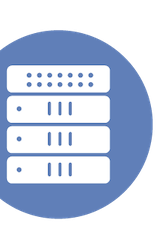Tech Field Day Coverage
Our delegate panel includes independent writers and thought leaders, and we collect their coverage of the event, Tech Field Day presentations, and sponsoring companies here.
Off the Cuff – NFD17 Wrap Up
In the most recent “Off the Cuff” episode of Network Collective, the crew discussed what they saw at Networking Field Day last week. What happens when six delegates sit on a podcast together? Magic!
Read More:
Apstra at NFD16
Terry Slattery got a look at Apstra at Networking Field Day last year. He was impressed by the potential of their Apstra Operating System for intent-based networking. Now the company has announced support not just for more modern leaf-spine architectures, but for VXLAN overlays as well. He looks forward to the day when he can use AOS in a real network deployment.
Read More:
E8 Storage Announces Software-only Offering
Dan Frith heard from E8 Storage at Storage Field Day last year. The company recently announced an exciting new feature, the launch of E8 Storage Software that can run across a range of qualified commodity hardware. This lets you connect up to 96 host servers to a single E8 Storage Controller. While E8 has no plans to exit the hardware market, Dan thinks the shift to embrace a more software centric approach is indicative of larger industry trends.
Read More:
E8 Storage Announces Software-only Offering
What’s new and how to one click upgrade to NSX 6.4.x ?
Mariusz Kaczorek got a look from WMware at what’s new with NSX 6.4.0 at Networking Field Day last week. He highlights the one-click upgrade available, then digs into the Application Rule Manager and Identity Firewall features of the release.
Read More:
What's new and how to one click upgrade to NSX 6.4.x ?
Networking Field Day 17: Hawt or Naught
WIth Networking Field Day in the rearview mirror, Chris Grundemann looks back at some of the trends from the presenters. He breaks down what’s in and out, and includes a lot of animated GIFs as a bonus!
Read More:
Networking Field Day 17: Hawt or Naught
Revisited: The Need for Stretched VLANs
In this post, Ivan Pepelnjak revisits an old saw inspired from Tech Field Day Extra at Cisco Live Europe: Stretched VLANs. Ivan lays out why he’s skeptical of the need for stretched VLANs at all.
Read More:
Revisited: The Need for Stretched VLANs
New Role, Same Goal
Former Tech Field Day delegate Matt Oswalt surprised some folks by presenting for Juniper Networks at Networking Field Day. In this blog post, he writes about taking a new role with Juniper in a marketing capacity, shifting from focusing exclusively on code into a marketing role. In this, he’ll still be writing technical blog posts, contributing to open source, and researching new topics, but will now have more opportunities to share this with the community. We wish Matt the best of luck in the new role, and look forward to hearing from him more often!
Read More:
Networking Field Day @ Cisco Live
Make sure you’re following Nicola Arnoldi for all of his updates out of Tech Field Day Extra from Cisco Live Europe. It’s his first Field Day experience, so we’re looking forward to the new perspective!
Read More:
Networking Field Day @ Cisco Live
My first day at Tech Field Days Extra @ Cisco Live 2018
In this post, Nicola Arnoldi shares some thoughts from Cisco Live Europe, including his first Tech Field Day Extra experience. During the presentation, Nicola got a look at Cisco’s multicloud strategy, their network assurance engine, and Tetration. That’s a lot of deep dives for the first day, but Nicola does a good job of sorting through the fire hose of information in the post.
Read More:
My first day at Tech Field Days Extra @ Cisco Live 2018
Cloud Field Day 2 – A lesson learned
Last summer, Lino Telera attended his first Cloud Field Day. While the presenting companies showed off a vast array of products, platforms and solutions, for Lino the overall theme came down to being more dynamic with data across the cloud. He gives his impressions of all the presenters, from HPE’s Nimble Cloud Volumes to Nirmata’s SaaS solution to close the gap between developers and sysadmin.
Read More:
Cloud Field Day 2 – A lesson learned
Networking Field Day 17 (NFD17) Redux
John Herbert shares his parting thoughts from Networking Field Day last week. He touches on the two dominant themes he saw from the presenters, ever increasing automation and an emphasis on telemetry. He shares his favorite presentations as well. Make sure to watch the recorded video of the presentations to see for yourself.
Read More:
Networking Field Day 17 (NFD17) Redux
Are network vendors ignoring serverless security?
The move of servers to the cloud has integrated more complexity to network security, as the assumptions of static rules based networking break down. Keith Townsend saw a presentation how network companies are addressing this from Juniper Networks. But this caused him to question if not enough attention is being paid to the emerging serverless market like AWS Lambda.
Read More:
Are network vendors ignoring serverless security?
BiB 26: Extreme Networks At NFD17 – Composing Workflows For Mean Time To Payrise
Greg Ferro and Drew Conry-Murray posted a Briefings in Brief episode on what they saw from Extreme Networks at Networking Field Day last week. They focus on their presentation reviewing their automation efforts with StackStorm and Workflow Composer. Once you listen to the episode, be sure the checkout the full video of Extreme Networks presentation for yourself.
Read More:
BiB 26: Extreme Networks At NFD17 - Composing Workflows For Mean Time To Payrise
Automatic Product Pitch Generator
John Herbert shares some fun for your next enterprise networking event, including a Networking Buzzword Generator and a buzzword bingo card! In the words of the buzzword generator: Our ground-breaking Next Generation Networking product predictively automates your environment through RESTful APIs, a single pane of glass, and network modeling.
Read More:
Automatic Product Pitch Generator
Legacy IT Is Not A Monument
In this thoughful piece, Tom Hollingsworth breaks down why legacy IT is not in fact a monument to behold in all of its read-only grandeur, but rather a pain point for an organization. Tom takes an IT wrecking ball to these ersatz icons.
Read More:
Cisco, Mellanox, Ixia and Cumulus: Last Day of NFD17!
It may be his ninth Networking Field Day event, but John Herbert found a lot to be excited about at his most recent event. If you missed any of the presentations, be sure to check out our full video from each company. There’s lots of interesting presentations on automation, network fabrics, and hybrid cloud services.
Read More:
Cisco, Mellanox, Ixia and Cumulus: Last Day of NFD17!
BiB 25: ThousandEyes At NFD17 – Expanding Into User Experience
Greg Ferro and Drew Conry-Murray posted a Briefings in Brief episode based on what they saw from ThousandEyes at Networking Field Day last week. They look at how the company is moving away from being strictly a visibility company, and more into monitoring overall customer experience with their internet as a network approach.
Read More:
BiB 25: ThousandEyes At NFD17 - Expanding Into User Experience
BiB 24: Juniper OpenContrail At NFD17 – One Fabric To Bind Them
Greg Ferro and Drew Conry-Murray posted a Briefings in Brief episode on Juniper Networks’ presentation from Networking Field Day last week. They focus on their announcements regarding Contrail. Juniper reviewed the difficulties of fully open sourcing OpenContrail, how Contrail and OpenContrail will diverge going forward, and where they see the commercial product going from here. Once you listen to the episode, be sure to watch the full video of their presentation.
Read More:
BiB 24: Juniper OpenContrail At NFD17 - One Fabric To Bind Them
What Next for XtremIO?
Chris Evans heard from Dell EMC’s XtremIO team at Storage Field Day late last year. In this post, he digs into the history of the platform, discussing how their X2 release addressed customer concerns and added better compression from the initial XtremIO X1 solution. Dell EMC is committed to supporting XtremIO long term, but Chris discusses where exactly the solution fits in the modern enterprise.
Read More:
CTS 105: Measuring User Experience with Voyance
Rowell Dionicio and the Clear to Send podcast take an updated look at Nyansa’s Voyance network analytics platform. Since initially seeing this at Mobility Field Day in July, Rowell reviews how the platform visualizes network information and can help you get to root causes of issues faster.
Read More:







